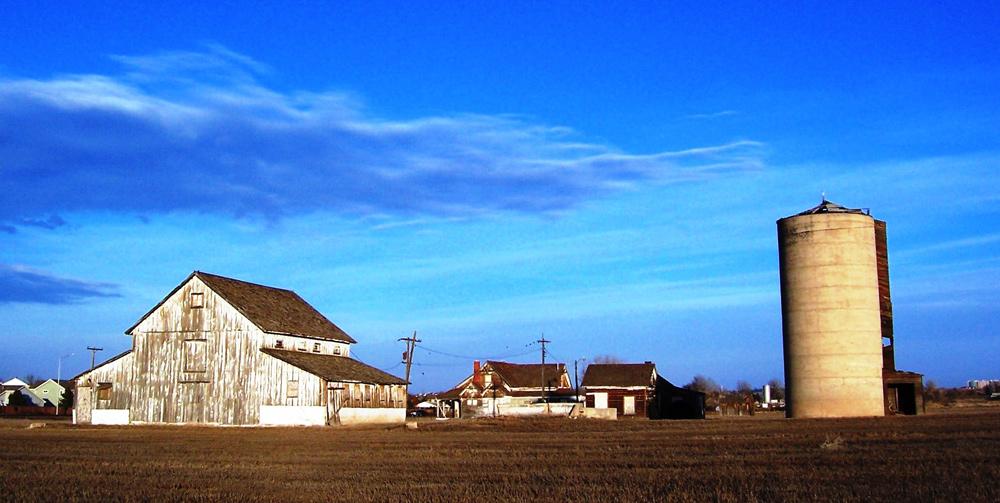Bromley/Koizuma-Hishinuma Farm
Full Article
Located near Bromley Lane and South Fifteenth Avenue in Brighton, the Bromley/Koizuma-Hishinuma Farm is significant for its association with an early Brighton civic leader as well as later Japanese American farmers in Adams County. Emmet Bromley first established the farm in 1883 and owned it until the 1920s. In 1947 the Koizuma and Hishinuma families bought the farm, which the Hishinumas operated for the next six decades. In 2006 the city of Brighton bought the farmstead to preserve an important part of the area’s agricultural history and make the property into a living farm, education center, and recreation space.
Bromley Farm
In 1883 Emmet Bromley bought 200 acres of land south of what is now Bromley Lane in Brighton. Bromley and his brother Martin had come to Colorado from New York in 1877. After working in Denver for a year, Bromley bought his own cattle and rented a farm to get started in the dairy business. By 1883 he was able to buy his own land and was also working 600 additional acres of dry land west of his farm.
Bromley became a prosperous farmer as well as a local business and civic leader. He expanded his property to more than 1,100 acres, on which he raised livestock, grew crops, and planted walnut tree orchards. He was active in local business as president of the First National Bank of Brighton, the Gibraltar Oil Company, and the German Ditch and Reservoir Company. In 1892 he married Anna Dickson, and around 1900 he built a one and a half-story farmhouse for his growing family.
The Bromley brothers attained prominence in Brighton-area politics. Starting in 1890, Bromley was elected to the state legislature, where he earned the title “Father of Adams County” for introducing the bill that created Adams County out of northern Arapahoe County in 1902 and made Brighton the new county seat. His brother Martin then became the county’s first sheriff.
In the early twentieth century Bromley traded some of his land for Denver investment properties that performed poorly. He then had to sell even more land to cover his debts, ultimately leading the family to move in with relatives. In 1922 Bromley died deeply in debt, and in 1926 his wife had to give up the deed to their farm. The farm’s ownership over the next decade remains unclear, but several of the farm’s surviving buildings, including a migrant worker house, a silo, and a barn, probably date to this period.
James/Roberts Interlude
The property’s history becomes clear again in 1935, when I. B. James bought 160 acres of the former Bromley Farm. James operated a tourist bus company and had a hotel near Rocky Mountain National Park, and it is possible that he and his family planned to develop a resort on foreclosed farmland in Adams County. In the meantime, James hired William O. Roberts to manage the farm. Over the next decade, the Roberts family lived on the farm, where they grew sugar beets, alfalfa, corn, and grains, and raised hogs and dairy cattle.
Koizuma-Hishinuma Farm
In 1947 the large Hishinuma family, which had eleven children in addition to parents Yachi and Sen, partnered with relatives Mitsuye and Sumi Koizuma to purchase the farm for $40,000. Japanese immigrants like the Koizumas and Hishinumas had settled in Adams County since the early 1900s, when they were recruited to work in sugar beet fields and canning factories. Over the next few decades, they gradually saved enough money to start leasing and buying farms of their own. The growing economic prosperity of Colorado’s Japanese Americans collided with strong anti-Japanese sentiment during World War II, but Governor Ralph Carr defended the constitutional rights of the state’s Japanese residents and Colorado voters defeated a proposed constitutional amendment that would have prohibited Japanese aliens from owning land.
The Hishinumas and the Koizumas had each farmed elsewhere in Adams County before moving to the Brighton area. At the farm near Brighton, the Hishinumas lived in the large main house, while the smaller Koizuma family (which adopted two Hishinuma daughters) lived in the former migrant worker house. Together they grew fruit and vegetables for their own use as well as sugar beets, cabbage, alfalfa, and corn for businesses such as the Great Western Sugar Company and the Kuner-Empson Canning Company.
After Yachi Hishinuma died in 1958 and the Koizuma family moved to New York in 1963, ownership of the farm passed to the five Hishinuma sons. The youngest son, James, managed the farm until his death in 2004.
Today
In 2005 the surviving members of the Hishinuma family sold the farm to a developer. In 2006 the city of Brighton stepped in to buy a 9.6-acre parcel around the historic farmstead to save it from demolition and redevelopment. In 2007 the farm was listed on the National Register of Historic Places. Brighton developed a master plan that called for gradually restoring the property as a living farm, education center, and recreation space. The city has received funding for the project from Adams County Open Space and the State Historical Fund, allowing it to begin restoring the farm’s buildings.


















